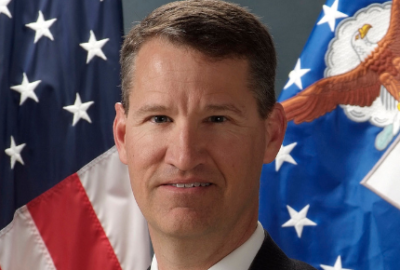
Army, DHA take steps to stop managing day-to-day IT operations
The Air Force’s Cloud One program faces a protest by Leidos, while the Army names a new project manager for data and the CIO Council upgrades its website for ...
The end of fiscal 2019 brought plenty of excitement in the federal acquisition sector over the last week.
We saw protests—of course—much-anticipated contract awards and new acquisition strategies to set the stage for 2020.
All of this culminated what the data likely will show as one of the busiest fourth quarters in a long time.
Let’s start with the big contract awards.
Late on Friday, the Army took a major step toward the goal of getting out of the day-to-day management of its IT services.
The Army awarded three contracts worth a total of more than $34 million under its enterprise IT-as-a-service (EITaaS) program to AT&T ($5.6 million), Verizon ($9.7 million) and Microsoft ($18.2 million).
Using the other transaction agreements (OTA) process, the Army will pilot this concept under a fixed-price contract to install contractor-operated networks on small, medium and large-sized bases.
And because it’s an OTA, the Army turned the awards around in about six weeks. The service released the OTA announcement in July.
At the same time because it’s an OTA, it’s unclear how many other bids the Army received and the likelihood of a protest is minimal.
The awards also put the Army on a similar path as the Air Force and the Navy in outsourcing the management of all IT services.
Army CIO/G6 Gen. Bruce Crawford has said in the past that the goal is to modernize the service’s network and IT services, and keep them updated as technology and needs change.
The Army estimated earlier this year that 70 percent of the servers, routers and end-user devices on its 288 worldwide facilities are at or near the end of life. The figure is even higher for the equipment that handles voice communications — about 90 percent.
While the Army is just getting started, the Air Force announced on Sept. 27 it is expanding its pilot with Microsoft for EITaaS.
Microsoft won a $44.9 million modification to its previously awarded contract for network-as-a-service.
The Air Force says under this contract adjustment Microsoft will provide WiFi, public cellular connectivity, base area network transformation and dual path wide area network connectivity at the three bases—Cannon Air Force Base, New Mexico; Hurlburt Air Force Base, Florida; and Maxwell Air Force Base, Alabama—that are part of this pilot.
This new work extends the pilot effort to Sept. 30, 2021 and means the total OTA now is worth more than $109 million.
Bill Marion, the Air Force’s deputy chief information officer, said at the recent Billington Cybersecurity Conference that EITaaS pilot will pick up steam over the next month or so.
DHA details new approach to IT
Meanwhile, the Defense Health Agency issued a request for information seemingly following the service’s path for EITaaS.
While the RFI doesn’t specifically mention this as-a-service construct, DHA is asking for everything from IT operations support and lifecycle management to IT asset planning and management to identity management services to help desk to end-user device support to local area network administration.
“The DHA Deputy Assistant Director Information Operations/J-6 (DAD IO/J-6) has identified a significant and pressing need to refine its operational IT service delivery model,” the RFI states.
The delivery model focuses on having a “standardized, consistent and repeatable processes for delivery of IT services across the DHA enterprise to optimize use of shared resources. A data-driven, evidence based and measured improvement of operational processes and IT services through the adoption of industry best practices. A continuous assessment of value and on-going operational optimization that drives efficiencies through redesign, redirection and/or automation.”
Responses are due Oct. 4.
DHA says it will review the RFI responses and ask selected companies to discuss specifics between Oct. 15-17 in San Antonio, Texas.
While DHA didn’t discuss its contracting strategy, it wouldn’t be surprising if it followed the Army and Air Force’s approach and used an OTA.
The question, however, continues to come up: if OTAs are supposed to be used to bring in innovative or non-traditional government contractors, then why are the services hiring companies like AT&T, Microsoft and Verizon? If there are innovative companies working as subcontractors, then it’s incumbent on the Army and the Air Force to be transparent about who those non-traditional vendors are and what services they are providing.
Otherwise, it just looks as though the Army and Air Force went around the federal procurement process and exploited the OTA process.
Air Force cloud award protested
One reason why DoD, and now potentially other agencies, are so attracted to OTAs is because of the fear of bid protests.
The Air Force experienced this with its recently awarded $728 million contract to SAIC to run its common cloud environment (CCE), now known as Cloud One.
Leidos filed a protest on Sept. 20 with the Government Accountability Office. GAO has until Dec. 30 to decide.
In the meantime, the Air Force’s plans to expand this enterprise commercial cloud platform for applications is delayed.
“The first CCE application went live in March 2018. To get there, the program has had to make initial investments. Each migration costs the U.S. Air Force approximately $446,000, and the total cost for the CCE program since 2015 is $136 million,” the Air Force states in an April 2019 release. “This shift frees up money and manpower for other requirements, like building better apps and improving network security.”’
The goal for the Cloud One program is to create a standardized platform that uses zero trust architecture concepts to host legacy and new applications while providing the Air Force with better security and more agility to change the application as required by mission needs.
Army wants more from its data
The Army is doubling down to ensure its making the most of its troves of data. As part of the Program Executive Office for Enterprise Information Systems (PEO-EIS) reorganization, the Army named a new project manager for data.
Chérie Smith, the program executive officer for PEO-EIS, said last week that Col. R.J. Mikesh will be the Project Manager for Army Data and Analytic Platforms. He will focus on improving Army information readiness and data agility to facilitate fact-based and informed decisionmaking.
The new organization is still in the planning phase, but the goal is to align the PM AR-DAP under the assistant PEO for Business Mission Area within the next year. Mikesh comes to the new PM for data after serving as the PM for Army Enterprise Systems Integration Program.
CIO Council website upgrade
The federal CIO Council is making it easier to find and understand federal technology policies. The council launched a redesigned website on Friday with a new policy and priorities catalog detailing 19 items such as A-130, data center optimization and several others.
Federal CIO Suzette Kent wrote in a blog post that the council took a customer focused approach to the content and information architecture as part of the redesign.
She said by interviewing stakeholders, conducting user testing and looking at visitor data the council determined what information users were looking for and how to approach design so that they could find it quickly and easily.
This is the first update for CIO.gov since 2017 when it moved to a new hosting site and fixed some back-end challenges.
Copyright © 2024 Federal News Network. All rights reserved. This website is not intended for users located within the European Economic Area.
Jason Miller is executive editor of Federal News Network and directs news coverage on the people, policy and programs of the federal government.
Follow @jmillerWFED






